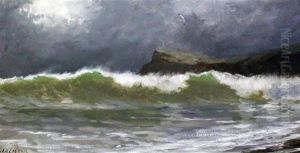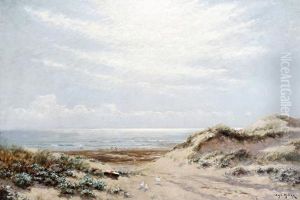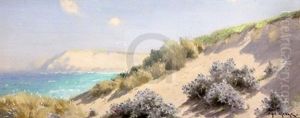James H.C. Millar Paintings
James Howe Carse Millar, known as James H.C. Millar, was a Scottish artist born in 1861, in a period rich with artistic transformation and innovation. Not as widely recognized as some of his contemporaries, Millar nonetheless contributed significantly to the art scene of his time, particularly in the realm of landscape and portrait painting. His work, characterized by its attention to detail and vibrant use of color, reflects the tradition of Scottish painting, while also incorporating influences from the broader European art movements of the late 19th and early 20th centuries.
Millar's education and early career were rooted in the cultural backdrop of Scotland, where he likely received his initial training. Throughout his career, he exhibited a profound connection to the Scottish landscape, often depicting rural scenes, coastlines, and the everyday life of its people with a mixture of realism and romanticism. This focus on landscape and genre painting was typical of Scottish art at the time, which often sought to capture the unique character and beauty of the country.
Throughout his lifetime, Millar exhibited his work at various venues, including the prestigious Royal Scottish Academy. However, historical records on Millar's exhibitions and the reception of his work are sparse, which has contributed to his relative obscurity in the broader historical narrative of Scottish art. Despite this, his paintings continue to be appreciated by collectors and enthusiasts of Scottish art for their craftsmanship and aesthetic appeal.
James H.C. Millar's contribution to art extends beyond his paintings. Through his works, he provides a window into the Scotland of his time, capturing the nuances of its landscapes and the spirit of its people with sensitivity and depth. Millar passed away in 1931, leaving behind a legacy that, while not as celebrated as that of some of his peers, offers valuable insights into the artistic and cultural fabric of Scotland during his lifetime.


















